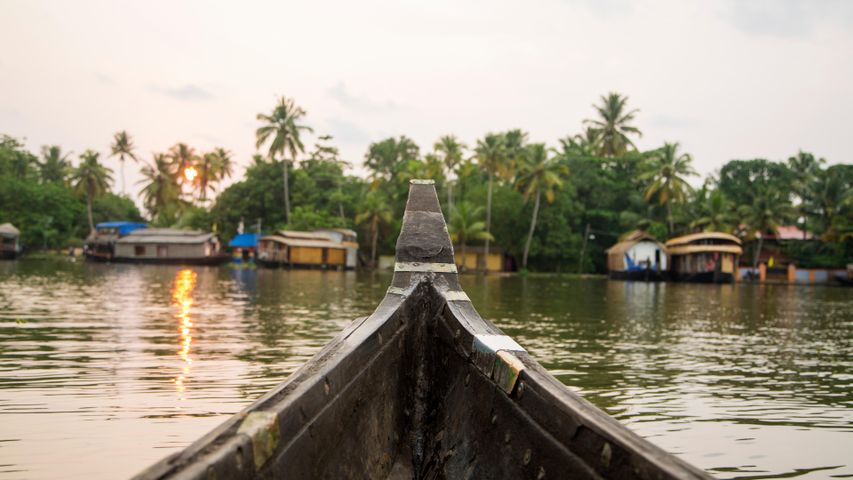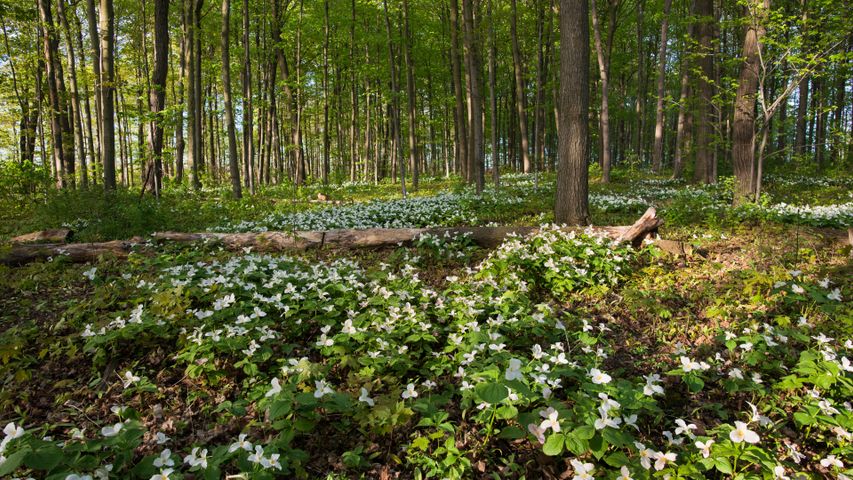Wildlife crossing in Wierden, Netherlands
© Frans Lemmens/Alam
Who uses this grassy bridge?. Wildlife crossing, Wierden, Netherlands
It’s not just chickens that cross the road. Wild creatures from frogs to elk have to roll the dice with death when they need to traverse the thousands of highways humans have threaded through wildlife habitat. Sadly, the dice don’t fall favourably for millions of animals each year, and collisions with vehicles cause fatalities for both them and the drivers who hit them.
Thankfully many countries now construct wildlife crossings – also called green bridges, ecoducts, ‘natuurbrug’ (like this one in Wierden in the Netherlands), and ‘écoponts’ (in France). These can be either overpasses or underpasses, and they are an expensive venture. Are they worth it? Well, officials in Banff National Park in Alberta, Canada, would say categorically yes. Over 20 years they built 44 bridges and underpasses so wildlife could cross the Trans-Canada Highway, which divides the park; traffic accidents involving wildlife dropped by 80 percent.
France built the first wildlife crossing in 1960 and the private highway company AFRR continues to construct elaborate safe passageways there, but the Netherland leads the initiative, with impressive 600-plus crossings, and counting. In fact, the Dutch can claim the honours for the world's longest animal crossing too – the Natuurbrug Zanderij Crailoo is an overpass that’s half a mile long and 55 yards wide. Now chickens and their four-legged friends can cross the road anytime, no questions asked.
Related Images
Bing Today Images




 Butchart Gardens in Brentwood Bay, British Columbia, Canada
Butchart Gardens in Brentwood Bay, British Columbia, Canada
 Hobbit-hole in Hobbiton Movie Set, Waikato, New Zealand
Hobbit-hole in Hobbiton Movie Set, Waikato, New Zealand
 Ashoka pillar, Kutagarasala Vihara, Vaishali, Bihar
Ashoka pillar, Kutagarasala Vihara, Vaishali, Bihar
 Tasmanian snow gum and pandani plants near Lake Dobson, Mount Field National Park, Tasmania, Australia
Tasmanian snow gum and pandani plants near Lake Dobson, Mount Field National Park, Tasmania, Australia
 Tulips at Emirgan Park in Istanbul, Türkiye
Tulips at Emirgan Park in Istanbul, Türkiye
 White trillium blooming in Ontario, Canada
White trillium blooming in Ontario, Canada
 Cherry blossoms in Shanghai, China
Cherry blossoms in Shanghai, China
 Château de Villandry and its garden, Loire Valley, France
Château de Villandry and its garden, Loire Valley, France

